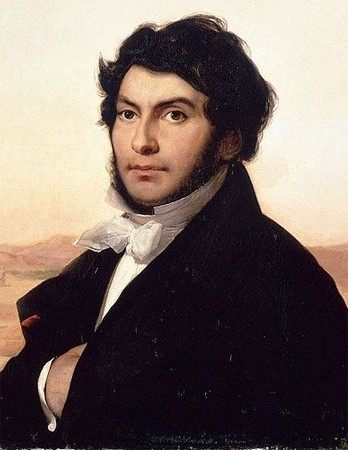 While re-reading the article Keeper of Genesis. Part II. EdfuBuilding Texts. The wisdom god Thoth, I was carried away by the photographs of majestic Egyptian temples and once again noticed the abundance of hieroglyphs covering the temple walls. A question came to my mind, which had arisen several times before, though I had never got to profound clarification of the issue. What do those beautiful signs mean, and have scientists managed to decipher and understand what the wise ancient people endeavoured to communicate to their descendants? Then, owing to a hint given in the commentary section, I learned about a wonderful man whom we should thank for letting us know so much about the Egyptian mythology and rituals, as well as about Ancient Egypt in general. That man was Jean-François Champollion, a French scholar, philologist and orientalist, and a founding figure in the field of Egyptology. In this article we will exactly talk about this remarkable person, about his life devoted to the quest of Truth and his selfless labour for the benefit of humanity, which could be a good example for all of us.
While re-reading the article Keeper of Genesis. Part II. EdfuBuilding Texts. The wisdom god Thoth, I was carried away by the photographs of majestic Egyptian temples and once again noticed the abundance of hieroglyphs covering the temple walls. A question came to my mind, which had arisen several times before, though I had never got to profound clarification of the issue. What do those beautiful signs mean, and have scientists managed to decipher and understand what the wise ancient people endeavoured to communicate to their descendants? Then, owing to a hint given in the commentary section, I learned about a wonderful man whom we should thank for letting us know so much about the Egyptian mythology and rituals, as well as about Ancient Egypt in general. That man was Jean-François Champollion, a French scholar, philologist and orientalist, and a founding figure in the field of Egyptology. In this article we will exactly talk about this remarkable person, about his life devoted to the quest of Truth and his selfless labour for the benefit of humanity, which could be a good example for all of us.
For a long time the barrier of Egyptian written language prevented researchers from penetrating the history of Ancient Egypt. Scientists attempted to read Egyptian hieroglyphs and even had access to the ancient Hieroglyphica treatise written in the 2nd century AD by Horapollo, a native of Upper Egypt, and since the times of Herodotus it was known that the Egyptians had applied three types of script: hieroglyphic, hieratic and demotic. However, all attempts to cope with the Egyptian written language with the help of works by ancient authors proved to be futile. Later on it was discovered that Horapollo had written his treatise with no competence, although it contained certain true points. Eventually, by the early 19th century the entire work on deciphering Egyptian hieroglyphs reached a deadlock, and one of scholars of authority had to admit publicly that it was an insoluble task.
Yet, there was a man who adhered to a different opinion – Jean-François Champollion (1790-1832). Champollion was a single-idea person. As he said himself, when at the age of 11 he had encountered ancient Egyptian monuments with hieroglyphs inscribed on them he had decided to find a clue to the secret of the script. Thereafter he dedicated the rest of his life to this goal, for many years studying oriental languages, first and foremost Coptic, looking for information about Egypt in works by ancient authors, thoroughly copying every hieroglyphic inscription he found, analysing and comparing texts of the Land of Pyramids, until all his efforts were rewarded.
Jean-François Champollion was born on 23 December 1790 in a small town of Figeac, southern France, in the family of a well-to-do book trader. At the age of 5 he successfully performed his first “deciphering”. According to his mother, he knew church prayers by heart. Comparing the “oral” and “written” texts, the boy determined what every letter in the alphabet meant and learned to read and write on his own.
After his native language he came to study ancient and oriental languages: ancient Greek, Latin, Hebrew, Arabic, Syrian, and Aramaic. Little Champollion pursued to discover as much as possible about Egypt. He started taking interest in Egypt as early as at the age of 7. Once a newspaper fell into his hands, where he read that in March 1799, near a small Egyptian village of Rosetta in the Nile delta, a soldier of Napoleon’s expedition corps had found “a flat basalt stone of a writing-table board size, on which two Egyptian inscriptions and a Greek inscription were carved”. The stone was transferred to Cairo where one of Napoleon’s generals, a passionate Hellenist, read the Greek inscription on the stone: it said that Egyptian priests thanked Pharaoh Ptolemy I Epiphanes for his benefactions to the temples on the ninth year of his reign (196 BC). To glorify the pharaoh, priests decided to erect statues of him in all sanctuaries of the country. Finally they informed that in memory of such event an inscription had been carved on a memorial stone in “sacred indigenous and Hellenic letters”. The anonymous author of the newspaper article finished the publication with an assumption that now “by comparing with Hellenic letters it would be possible to decipher the Egyptian text”.

The idea imprinted itself on Champollion’s soul. There is a testimony of one of his teachers that in early years Champollion vowed to decipher Egyptian hieroglyphs: “I will read them! In several years, when I grow up.” Whichever way you slice it, since that time Champollion attentively read everything available about Egypt. As a matter of fact, everything he studied and everything he was engaged in related to issues of Egyptology. He even began to learn Chinese only in aspiration to prove the affinity of Chinese and ancient Egyptian. Moreover, in summer 1807 Champollion composed a map of Egypt of the pharaoh times. He also familiarized himself with numerous non-published materials, genuine Egyptian papyri from private collections and a copy of the Rosetta Stone text. After the failure of Napoleon’s expedition to Egypt and Alexandria’s surrender, the Rosetta Stone itself was brought to the BritishMuseum in London, though the French Commission in Egypt had opportunely managed to make a copy of it and bring it to Paris.
The Rosetta Stone became a clue to the riddle of Egyptian hieroglyphic and demotic scripts, though before the “Champollion age” very few researchers managed to advance in deciphering the texts carved on it. A major obstacle was the lack of understanding of the Egyptian writing system in general; therefore all private successes gave no “strategic” result. For example, the Englishman Thomas Young (1773-1829) succeeded to ascertain the sonic meaning of hieroglyphs on the Rosetta Stone. There were also other early researchers who worked on deciphering of hieroglyphs, e.g. Chrétien-Louis-Josef de Guignes, Johann Georg Zoëga, Silvestre de Sacy, Johan David Åkerblad. Champollion was certainly familiar with their works, and in combination with his personal genius this enabled Jean-François to solve the task that had previously seemed to be insoluble.
At the age of 12 he thoroughly studied information contained in works by antique authors and compared the works with one another. While studying at the lyceum he started working on his monumental Egypt under the Pharaohs, and when he finished studies at the age of 16 he was elected member of GrenobleAcademy. By that time he knew as many as 12 languages.
The boy moved to Paris and continued learning from de Sacy and other famous orientalists. He occupied himself with Sanskrit, Zend and Pehlevi. At that, François paid major attention to Coptic, having learnt it to such an extent that, as he himself admitted, he could “talk to himself in Coptic”. At the same time he was thoroughly studying and copying Egyptian texts which became further more numerous in Europe.
In a letter dated 30 August 1808 and addressed to his elder brother, Champollion wrote about his “first steps” in studies of the Egyptian script: he managed to ascertain a major part of symbols of the demotic alphabet, independently from de Sacy, Åkerblad and Young. Two years later Champollion (independently from Young again) came to conclusion that similar alphabetic symbols-letters could be among hieroglyphs – by means of such symbols foreign names were written. Thus, the Rosetta inscription contains Greek names (Alexander and other), which in Champollion’s opinion “could not be expressed in the hieroglyphic part of the artefact unless the hieroglyphs could communicate sounds”.
At the age of 19, on 10 July 1809 Champollion became a professor of history in Grenoble, at the Department of Egyptology specially established for him.
Then the young researcher made a discovery which advanced the Egyptian script studies another step ahead. Thomas Young believed that links between the demotic cursive script and hieroglyphics were “too scanty”. Champollion discovered the third type of ancient Egyptian written language – the so-called hieratic script, the long-awaited missing link. Hence, the Egyptians had a single writing system and, depending on the needs, applied either hieroglyphics, or the hieratic script, or the demotic script.
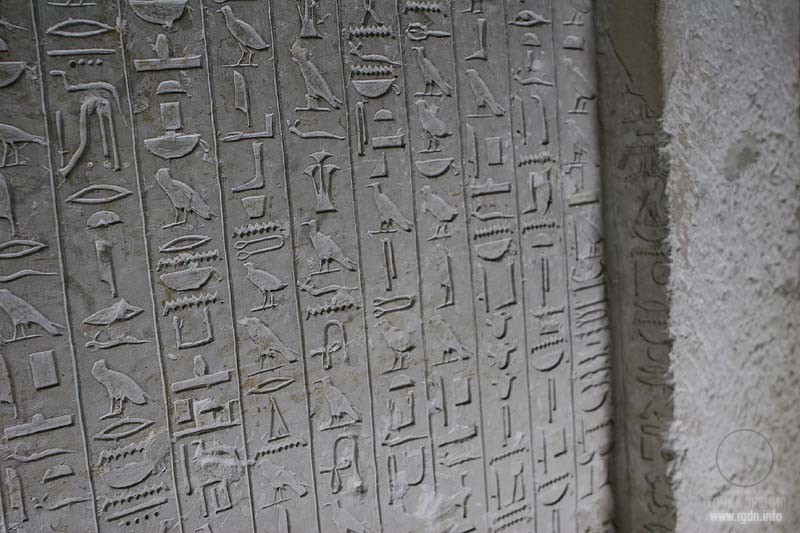
Some Egyptologists compare hieroglyphics with our typographic print, the hieratic script with manual inscription of letters, and the demotic script with cursive writing or stenography. Such comparison is figurative and not accurate, since hieroglyphics appeared the first in Egypt, then the hieratic script developed of it, and finally the demotic cursive script emerged (the oldest texts composed in the demotic script are dated to the late 8th century BC, i.e. are two and a half millennia “younger” than hieroglyphs). At that, despite such a big difference in age, all three types of script could be used in the same era. For instance, the Egyptians used hieroglyphics for temple inscriptions, the hieratic or demotic scripts for papyrus records. The external form of hieroglyphic, hieratic and demotic symbols is different, but the internal gist, the system of all the scripts is the same. At that, since the demotic script undoubtedly included alphabetic symbols, such symbols were also to be a part of hieroglyphics – that was Champollion’s logical conclusion. Now he only had to find proofs, concrete facts, by discovering a hieroglyphic, hieratic and demotic way of writing of one and the same symbol.
Laboriously comparing symbols from the three types of script, Champollion identified a system of correspondences between symbols of the demotic and hieratic scripts, on the one hand, and between symbols of the hieratic and hieroglyphic scripts, on the other hand. Now he could re-write a text composed of demotic symbols into the hieratic script, and translate the latter into symbols of hieroglyphics. Hence, the researcher closely approached the main riddle – hieroglyphs. Independently from Young, he revealed the name Ptolemy outlined with cartouche in the Rosetta Stone text, and then he “decomposed” it into components, more accurately than the English decipherer.
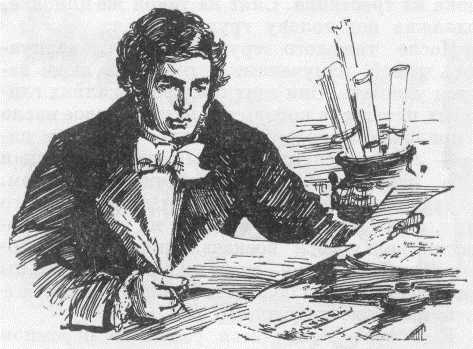
After long-time efforts Champollion got a copy of an inscription from an Egyptian obelisk that had been found lying on the ground not far from its foundation, where a Greek inscription with the names of Ptolemy and Cleopatra was carved. It would be logical to expect that among hieroglyphs on the obelisk there should have been symbols communicating the said royal names, inscribed in an oval cartouche. The way of writing of Ptolemy’s name was known owing to the Rosetta Stone, and another name was carved beside it and contained hieroglyphs transmitting sounds P, T, L, O (being a part of the name Ptolemy). In Ptolemy’s cartouche, the hieroglyph that depicted a lion transmitted the sound L and was the fourth from the inscription beginning. In the other cartouche, the same hieroglyph was the second from the beginning, i.e. it transmitted the sound L in Cleopatra’s name… “The two lions will bring victory to the third lion!” Champollion exclaimed, foreknowing his victory, for thus he not only proved the correctness of his reading of Cleopatra’s name – this also enabled him to find the way to read other, yet unknown hieroglyphs: K, R, etc. The name Ptolemy provided meaning for 7 hieroglyphs, whereas now Champollion had already 12 hieroglyphs at his disposal.
The researcher started working with the name Alexander, as inscribed on the Rosetta Stone, and it provided readings for the hieroglyphs N, S and other. When he analysed the name Benerica, also inscribed in a cartouche in the Rosetta Stone text, he got the meaning of the hieroglyph that transmitted the sound B. The new names brought readings for the new symbols, thus Champollion ascertained the meaning of 24 symbols-letters of the hieroglyphic alphabet.
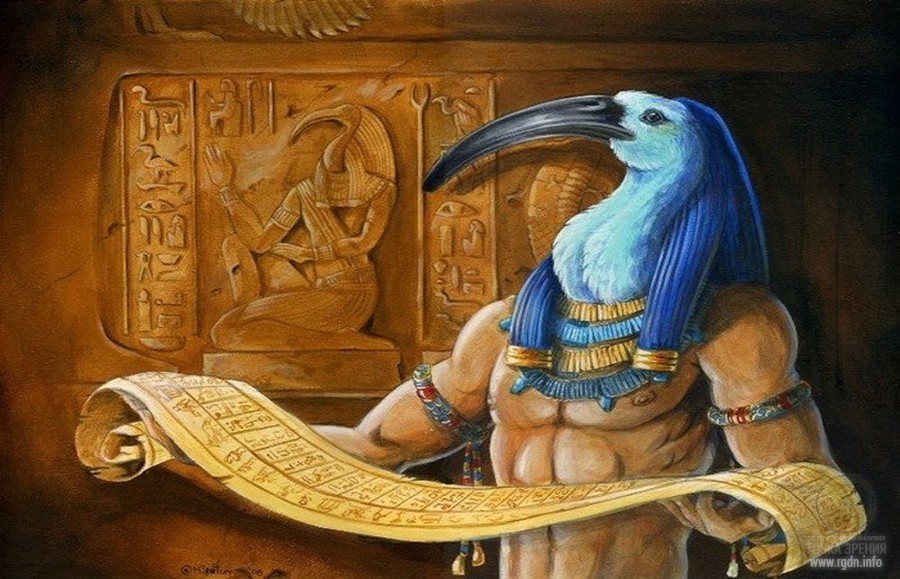
However, Champollion had no evidence that “alphabetic symbols” had been applied for Egyptian records and not only for transmission of foreign names. Young was positive the Egyptians had adopted their alphabet from the Greeks to record Greek names, and that “alphabetic symbols” in Egyptian texts had a totally different meaning than that of names, which meaning was literal and not semantic.
In the beginning Champollion adhered to the same opinion and, as he himself admitted, “persistently followed the wrong way until the moment when obvious facts showed me the Egyptian script from a totally unexpected angle, so to say, forced me to acknowledge a phoneticmeaningin many hieroglyph groups contained in texts which decorate Egyptian monuments of all ages”.
What were those facts? First of all, mathematical and statistical ones. On his birthday – 23 December 1821 – François Champollion did a marvellous calculation. The hieroglyphic text on the Rosetta Stone contained 1419 hieroglyphs, whereas the Greek part of the inscription, which corresponded to the said text, the number of words was 486. Hence, an inevitable conclusion was to follow: the number of words and the number of hieroglyphs were not equal, so hieroglyphs did not communicate certain words or concepts as it had been considered earlier. Hieroglyphs recurred in the text. If only different symbols were to be calculated, there would be only 166 of such symbols in the hieroglyphic part. This was another discrepancy with the number of words in the Greek text and additional evidence that a hieroglyph did not necessarily reproduce a word or a concept.
Weighty evidence in favour of “alphabetic symbols” was provided by demotic texts, in which, as Champollion and his predecessors demonstrated, alphabetic record of not just foreign names could be found, but also of words close to Coptic, i.e. Egyptian words. At that, hieroglyphic and demotic scripts are not various writing systems, but only versions of one and the same written language. Therefore, hieroglyphic symbols, just like demotic ones, should be applied to record Egyptian words as well.
Finally, very ancient lithographs with images of monuments and inscriptions fell into Champollion’s hands, where no Greek influence could be taken into account at all. If he managed to read the pharaoh names inscribed in cartouches by means of “alphabetic symbols”, he would confirm that the ancient Egyptians had applied alphabetic symbols not only to record foreign names, but to record words of their own language, too.
On 14 September 1822, in the morning Champollion began to scrutinize a cartouche with an inscription carved on Abu Simbel temple rocks. The inscription consisted of just 4 symbols, and the last two symbols were identical. The first hieroglyph depicted a circle or a disc. In the second cartouche there was a similar 4-symbol inscription, however the first hieroglyph depicted not just a disc, but a human figure with a disc on his head. Apparently that was an image of the sun god, whereas the disc in the first cartouche represented a symbolic depiction of such god. According to antique authors, the ancient Egyptians called the sun god Ra, whereas in Coptic the “sun” sounded as Re. Hence, the first symbol could sound as Ra or Re.
The last two hieroglyphs were already familiar to Champollion: he had found them in the names of Ptolemy and Alexander. The symbol was undoubtedly read as S, whereas its doubling was read as SS. Thus, 3 of 4 hieroglyphs could be read: Ra – (an unknown symbol) – S – S. Only the second hieroglyph was to be identified, but it was already known from the Rosetta text! In the text there was a combination of this hieroglyph with the familiar symbol S, which combination meant “to give birth”, “birth”, “born” and was read in Coptic as mise. In many oriental scripts applied to convey Semitic languages – Arabic, Syrian, Phoenician, etc. – vowel sounds are often not lettered, and Champollion quite reasonably assumed that the Egyptian script also ignored vowels. The Coptic mise could correspond to the Egyptian combination of consonants M and S, i.e. MS. Hence, the second symbol in the cartouche should be read as M.
Now the entire inscription could be read. Ra+M+S+S made Ramss, where the vowel E could be omitted between the two Ss. Therefore, the name in the cartouche was read as Ramses. As the author of two volumes of Egypt under the Pharaohs François Champollion knew the powerful pharaoh very well… So, did the hieroglyphs in the cartouche actually convey Ramses’ name?
Extremely excited, Champollion started scrutinizing other cartouches in search of new names and arrived at a brief inscription consisting of just three hieroglyphs, where he already knew the last two: one was M and the other was S. There remained only the first symbol depicting an ibis bird standing on a special rest. Champollion was well aware of the fact that in Egypt ibis had been revered as a sacred bird, a personification of the moon god. The name of the moon god was also known: in both Greek and Coptic languages it sounded as Tot (Thoth). Hence, the name in the cartouche could be read as Тot+м+с», i.e. Totmes or Thutmose. At that, the glory of pharaoh Thutmose could compete only with the glory of great Ramses!
Having read the names of the pharaohs whose lives were separated by centuries not just from his days, but even from the age when the Greeks had invented their alphabet, Champollion realized the significance of the discovery he made. A clue to the riddle of millennia was found, the hieroglyphic writing system was perceived…
Nonetheless, his conclusions had to be verified. Champollion devoted the entire first half of the day to such verification. No mistakes were revealed, his conclusions were correct and undeniable! François hurried to see his brother who worked in the nearby library of the French Institute. He ran into the room, threw the materials – the clue to the Sphinx’s riddle – on the table and exclaimed: “I have gained my end!” Agitated, he tried to tell about what he had done, but failed: Champollion “was unable to keep on his legs, turned numb” and lost consciousness.
Five days later, having come to his senses, Champollion began to formalize his discovery in a report which he delivered on 27 September (that was a sort of christening day for Egyptology as a field of science). The document was called Letter to Mr. Dacier, the indispensable Secretary of the Royal Academy of Inscriptions, Fine Language and Literature, regarding the alphabet of phonetic hieroglyphs applied by the Egyptians on their monuments to record titles, names and nicknames of Greek and Roman monarchs. The document had been lithographically printed before the report was delivered verbally.
But the report was only the initial “claiming pillar”. In 1824 Champollion’s monumental work was published, entitled Outline of the Hieroglyphic System of Ancient Egyptians, or Research on Major Elements of the Sacred Script, Various Combinations of Such Elements and the Link between this System and Other Egyptian Graphic Methods. According to the Soviet Egyptologist I.G. Livshits, this work is very interesting even nowadays.
Champollion adduced incontrovertible evidence that the ancient Egyptian written language contained two totally different types of symbols: “some symbols express sounds, while other express ideas”. Moreover, symbols of the first type “preserve such phonetic meaning in all hieroglyphic texts where they are found”, not just in foreign names. He showed that “by means of phonetic hieroglyphs ancient Egyptians wrote even the names of their deities, i.e. the names of beings which are easier and more appropriate to be expressed symbolically, given that the Egyptian sacred script was purely symbolic in its basis as it has been assumed until today”. The same alphabetic symbols were used for recording names of pharaohs and ordinary people, and ordinary words to top it all: verbs, nouns, adjectives, conjunctions, prepositions, and grammar indicators.
Now that the writing system was revealed, it was right the time to maintain hieroglyphics dictionary and grammar, which could help to start translating Egyptian texts and reading not just certain names or words, but whole inscriptions. Champollion got down to work.
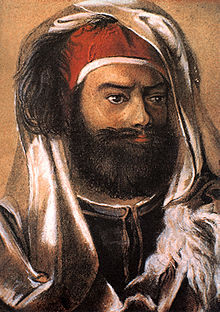 In July 1828 a truly historical event took place: the man who knew the language of ancient Egyptians arrived to Egypt for this first time. After many years of armchair studies Champollion was to get convinced of the correctness of his conclusions in practice.
In July 1828 a truly historical event took place: the man who knew the language of ancient Egyptians arrived to Egypt for this first time. After many years of armchair studies Champollion was to get convinced of the correctness of his conclusions in practice.
Having come to Alexandria, Champollion “kissed the Egyptian land, having set his feet on it for the first time after a long-lasting anticipation”. Then he went to Rosetta and found the place where the Rosetta Stone had been discovered, in order to thank Egyptian priests for their inscription dated 196 BC which played a crucial role in deciphering of hieroglyphs. From there the researcher got to Cairo along the Nile and finally saw the famous pyramids. “The contrast between the structure size and the simplicity of its shape, between the tremendousness of the material and the weakness of a human being whose hands erected these giant creations is indescribable,” Champollion wrote. “Thinking of the age of these structures, I can follow the poet and say: “Their ineradicable mass has tired the time.” In Saqqara necropolis the researcher made quite a significant discovery: near one of the tumbledown pyramids his employee dug out a stone with a hieroglyphic inscription, and Champollion read there a royal name and identified it with the name of Unas (Unis, or Onnos), the last pharaoh of the 5th Dynasty who was known from the work by the antique historian Manetho. A half of a century passed before the correctness of Champollion’s conclusion was confirmed.
At that, Champollion did not pay too much attention to the pyramids – he was looking for inscriptions. After seeing the Memphis ruins he went down the Nile. In Tell el-Amarna he discovered and examined remains of a temple (later on, the city of Akhetaten was found at the site), and in Dendera he saw the first extant Egyptian temple. The construction of this temple, which was one of the largest Egyptian temples, was started by the pharaohs of the 18-19th Dynasties, the powerful rulers of the New Kingdom, including Thutmose III and Ramses II the Great. “I won’t even try to describe the deep impression this enormous temple and especially its portico produced on us,” Champollion wrote. “We could certainly mention its dimensions, but it is simply impossible to describe it so that readers could gain a proper idea... This is the ultimate combination of gracefulness and grandeur. We spent two hours there in a great excitement, passed through the halls, and in the pale light of the moon I tried to read inscriptions carved on the walls.”
Previously there had been a belief the DenderaTemple complex was dedicated to goddess Isis, however Champollion received evidence that was the temple of Hathor, the goddess of love. Furthermore, the temple was not as ancient as researchers thought. It gained its current appearance in the times of the Ptolemaic dynasty and was completed by the Romans.
From Dendera Champollion went to Luxor, where he examined the Temple of Amon in Karnak and identified certain stages of its long-lasting construction. A giant obelisk covered with hieroglyphs engrossed his attention. Who could have erected it? The hieroglyphs inscribed in a cartouche provided an answer to the question: it had been the legendary queen Hatshepsut who had ruled in Egypt for over twenty years. “The obelisks are made of solid granite from southern quarries,” Champollion read in the text carved on the stone surface. “The obelisk tops are made of fine gold, the best gold found in all foreign lands. They can be seen near the river from afar; the light of their rays fills both sides, and when the sun is between them it truly seems it is rising to the edge(?) of the sky... To gild the obelisk tops, I gave out gold that was measured in scheffels, as if those were sacks of grain... For I knew Karnak was the heavenly frontier of the world.”
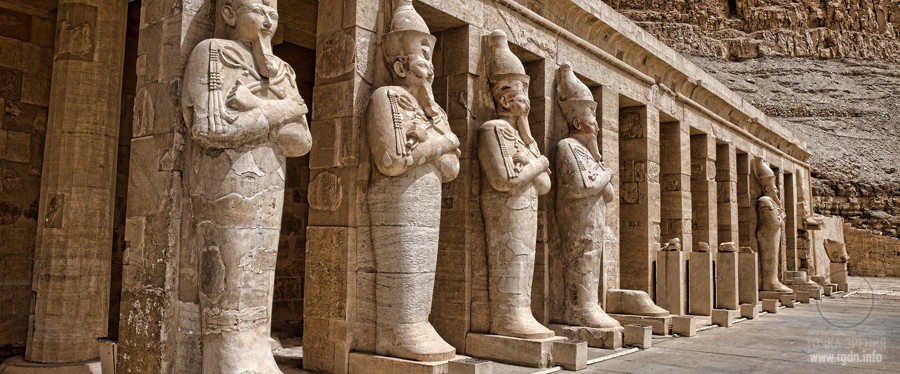
Champollion was deeply astounded. He wrote to his friends in faraway France: “Finally I got to the palace, or rather to the city of palaces – Karnak. There I saw the entire luxury of the pharaohs’ life, everything that people ever managed to invent and create in giant dimensions... No other nation in the world, either ancient or contemporary, has grasped the art of architecture and implemented it on such a grandiose scale as the ancient Egyptians did. Sometimes it seems the ancient Egyptians were thinking on a scale of people of one hundred feet in height!”
Champollion ferried to the west bank of the Nile, visited tombs in the Valley of the Kings and ruins of the Mortuary Temple of Hatshepsut in Deir el-Bahari. “Everything I saw delighted me,” he wrote, “although all the structures on the left bank pale before the giant stone miracles that surrounded me on the right bank.”
Then the researcher went to the south, to the Nile rapids, visited Elephantine, Aswan and the Temple of Isis on PhilaeIsland. Everywhere he was he copied inscriptions, translated and interpreted them, drew sketches, compared architectural styles and identified differences between them, determined which epoch one or another find belonged to. He made discovery after discovery. “I can assert fully responsibly,” Champollion wrote, “that our knowledge of Ancient Egypt, especially of the Egyptian religion and culture, will be significantly enriched as soon as the results of my expedition are published.”
Champollion stayed in Egypt for one and a half years and travelled all over the country from border to border. The scientist did not spare his health: several times he had sunstrokes, and two times he was taken out of underground tombs, unconscious. With such loads, even the salubrious Egyptian climate could not cure him of tuberculosis. In December 1829 Champollion returned home and processed the expedition results. However, the researcher did not see publication of his last works – Egyptian Grammar (1836) and Egyptian Dictionary in Hieroglyphic Script (1841). He died on 4 March 1832 at the age of 41.
Having acquainted myself with the story of this Man and feeling deep gratitude for his selfless lifelong labour, so important for contemporary humanity, I recalled the following lines from the AllatRa book:
… most importantly, to double your effort in taking care of your Soul, in the spiritual work on yourself and helping other people understand the real values of life and the transience of the given lifetime. If you have come to realise it yourself, help another person. After all, by helping other people, in the spiritual sense you help yourself. Thus, you can help yourself much more than a doctor who is temporarily saving your material body. At that, death is death: one way or another, sooner or later, it will be inevitable for any person. What matters is not the number of years lived, but the quality of one’s life lived in the spiritual sense. One can live a hundred and twenty years of a useless selfish life, while another person can live only twenty one years, but of a high-quality spiritual life, the life of a real Human Being. And the difference in their afterlife destiny will be enormous. After all, life does not end with the death of one’s body. For a person who has practically no lifetime left, it is important to earn if not salvation of his or her Personality and the Soul then at least Peace.
Videos:
Written language and knowledge of the ancient Egyptians:
Mystery of the Rosetta Stone: https://discoveringegypt.com/egyptian-video-documentaries/mystery-of-the-rosetta-stone/
List of materials used:
А. М. Kondratov. The Riddle of the Sphinx: http://libros.am/book/read/id/167799/slug/zagadka-sfinksa-1
http://history.vn.ua/book/100arhiologicheskih/32.html
http://www.manwb.ru/articles/persons/great_europ/shampolion/
http://www.psciences.net/main/sciences/archeology/articles/egier.html
http://www.krugosvet.ru/enc/gumanitarnye_nauki/lingvistika/SHAMPOLON_ZHAN-FRANSUA.html
Prepared by Julia Matveyeva (Russia)
 A message from the past. The man who has deciphered hieroglyphs
votes:
125
A message from the past. The man who has deciphered hieroglyphs
votes:
125
|

Project Aim










Leave comment